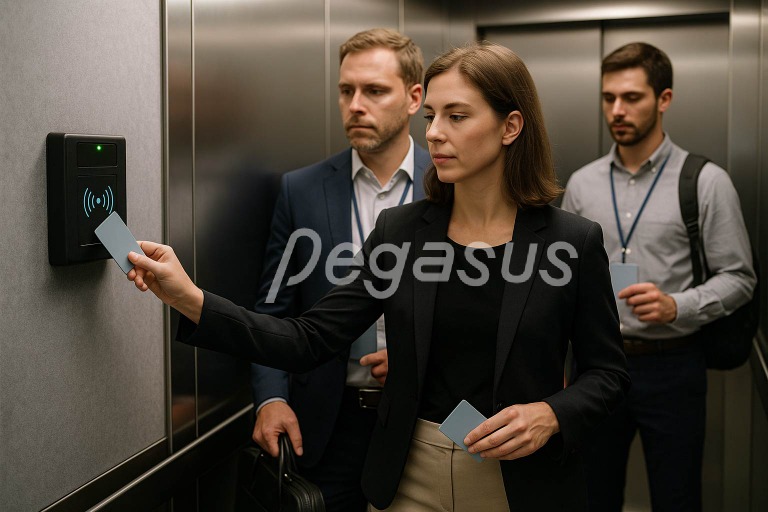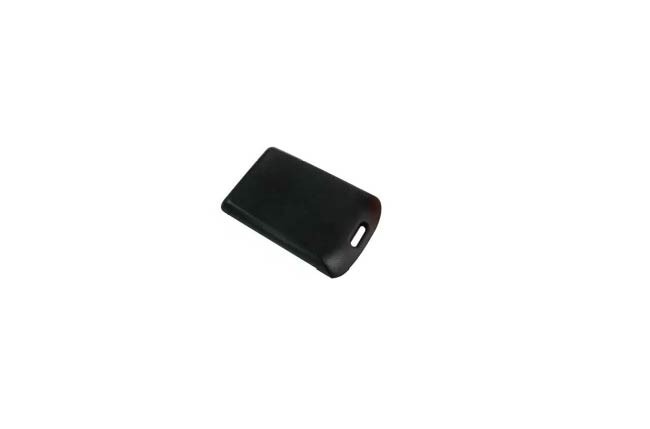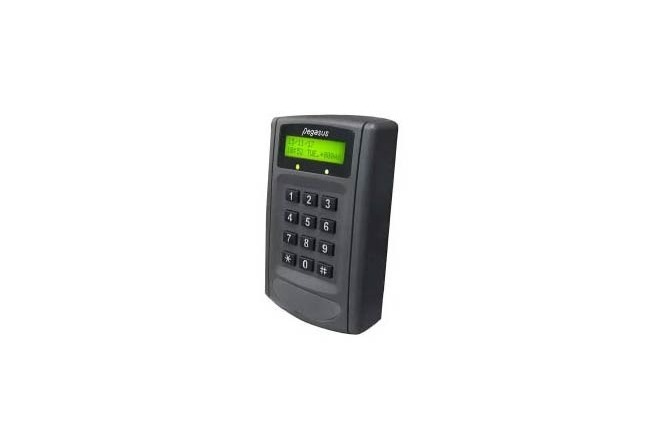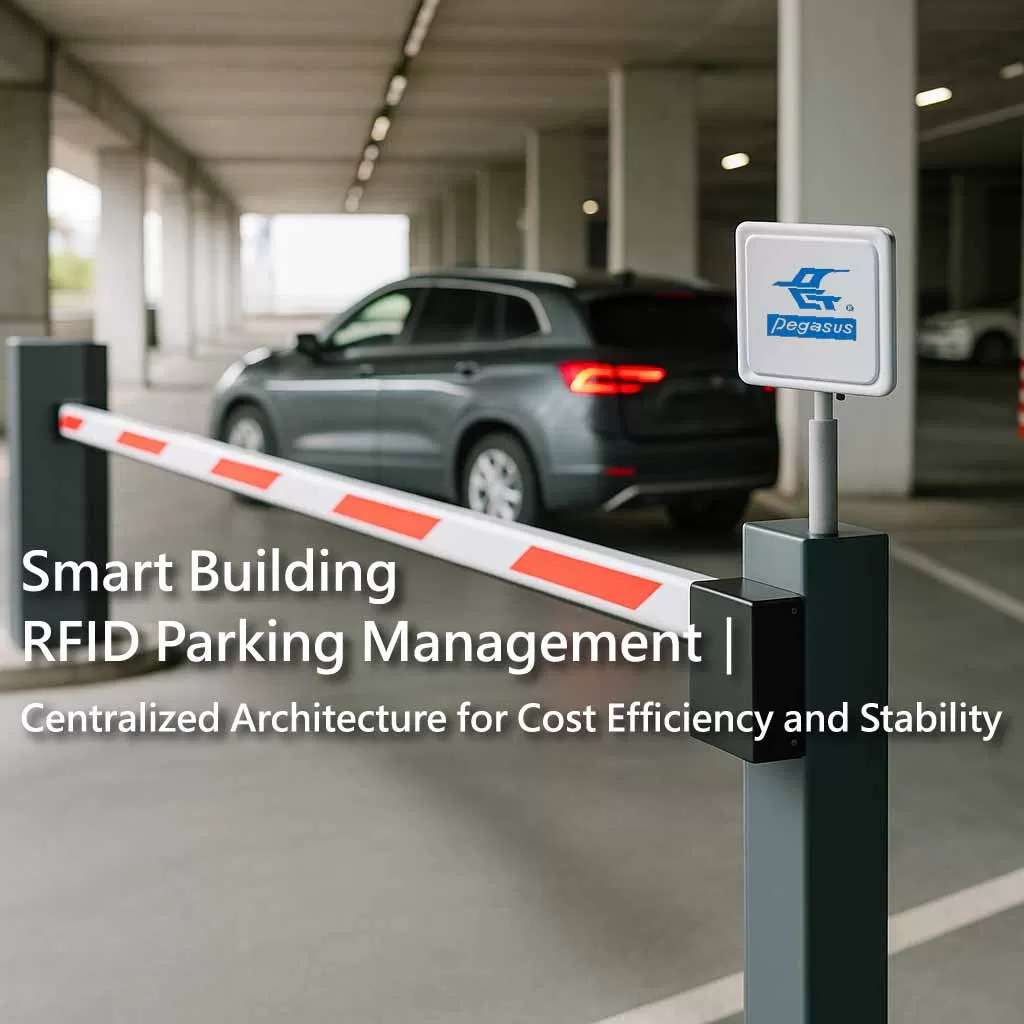RFID Elevator Access Control|2.4GHz Hands-Free System for Smarter and Faster Access
As RFID technology and smart-building systems continue to advance, elevator access control is shifting from traditional card-tapping methods toward more efficient 2.4GHz active identification.
Compared with conventional systems that require users to bring a card close to the reader, active RFID enables automatic user recognition the moment they walk into the elevator—significantly improving traffic flow and authorization accuracy.

Limitations of Traditional Elevator Access Systems
Traditional elevator access control relies on proximity RFID technology, which requires the card to be placed directly near the sensing area.Although secure, this method is inefficient during peak hours and does not meet modern expectations for frictionless, contactless movement especially in high-traffic or post-pandemic environments.
Active RFID Elevator Control Solution
Pongee's 2.4GHz active hands-free elevator access control system integrates floor authorization for residential and commercial buildings.
When the user enters the elevator, the system automatically identifies the person and instantly sends the corresponding authorization signal to the controller, enabling the assigned floors without requiring card tapping.
1. Detection Distance Up to ~15 Meters (Environment-Dependent)
Long-range sensing allows the system to detect users as they approach the elevator, without requiring them to stop or take out their card.2. High-Speed Automatic Identification (40 cm–1.5 m Range)
Final, high-precision authentication occurs within short distance as the user enters the elevator, ensuring fast and accurate processing.3. Multi-Floor Authorization
Access rights can be assigned based on user type, card/tag ID, or role—suitable for offices, residential buildings, hotels, and multi-purpose facilities.4. Secure Encryption & Anti-Cloning
Active tags feature anti-duplication and anti-replay mechanisms to enhance overall system security.5. Safety Distance Design
The system uses a dual-range approach: long-distance detection (3–15 m) for preliminary recognition and near-range sensing (40 cm–1.5 m)for final authorization, preventing misreads among multiple users.
6. Multiple Output and Communication Interfaces
Supports Relay, Wiegand 26/34, UART, RS485, and TCP/IP data transmission for easy integration with existing elevator control units.
7. Suitable for Various Building Types
Ideal for residential towers, commercial buildings, corporate offices, hospitals, and public facilities.
This system architecture illustrates how the management PC connects to field devices through USB, RS-232, or TCP/IP converters, and centrally manages the PFH-6750V active reader and 2.4GHz Active Tag via an RS-485 network.
Through this architecture, administrators can:
- Monitor elevator access status in real time
- Adjust user floor permissions dynamically
- Establish a “hands-free access” and “role-based floor authorization” control mechanism

Application Benefits
1. Faster Traffic Flow & Higher Efficiency
Users are recognized before entering the elevator area, eliminating the need to pause and tap a card—ideal for high-volume environments.2. Contactless Security Enhancement
Minimizes risks associated with card loss, card cloning, or close-contact scanning.3. Accurate Floor Authorization
Automatically grants access to designated floors based on user identity, suitable for commercial complexes and high-visitor environments.4. Reduced Maintenance Costs
Active identification reduces physical card wear and prevents frequent misreads, lowering long-term maintenance burden.5. Integration with Smart Building Systems
Supports integration with access control, surveillance, visitor management, and building automation platforms.*Note: The above results are based on individual case studies. Actual performance may vary depending on implementation conditions.
Extended Value
- Applicable to smart homes, commercial buildings, industrial facilities, and corporate campuses.
- Can be paired with backend systems for visitor management, data reporting, and dynamic authorization.
- Supports the long-term development trend of intelligent, secure, and efficient building management.
(FAQ)
Q1:How is a hands-free RFID system different from traditional card tapping?
A1:Active RFID identifies the user automatically before they enter the elevator, eliminating the need to hold or tap a card.
Q2:Can the system avoid misreads when multiple people enter the elevator together?
A2:Yes. The system uses long-distance pre-detection combined with short-distance final authorization to prevent incorrect identification.
Q3:Can this solution integrate with existing elevator control systems?
A3:Yes. Its communication protocols are compatible with most standard elevator controllers on the market.
Q4:Does this enhance overall building security?
A4:Yes. Automatic and precise identity verification limits unauthorized access and reduces issues related to lost or duplicated cards.
Cooperation Inquiry
📚 If you are a system integrator, elevator contractor, or building management company looking for a seamless RFID access control solution,
Pongee provides complete modular designs, OEM/ODM support, and long-term technical expertise to help you deploy and optimize your system.





